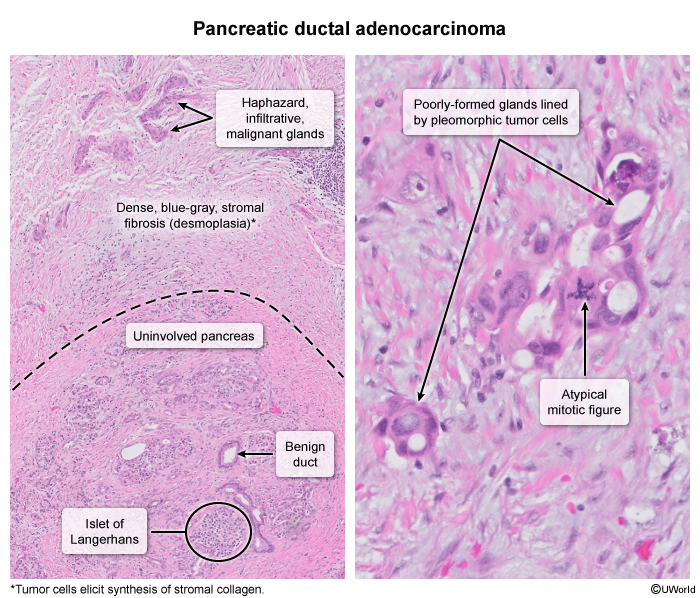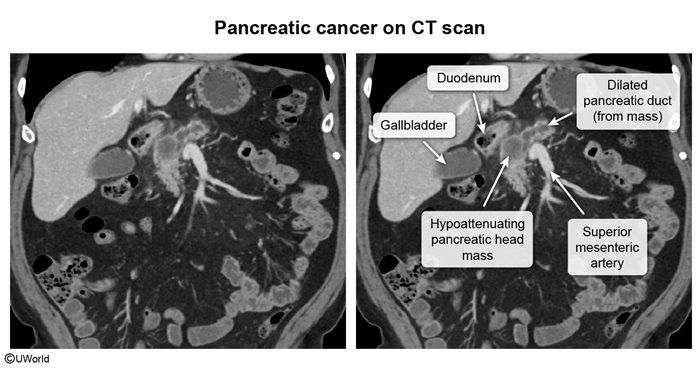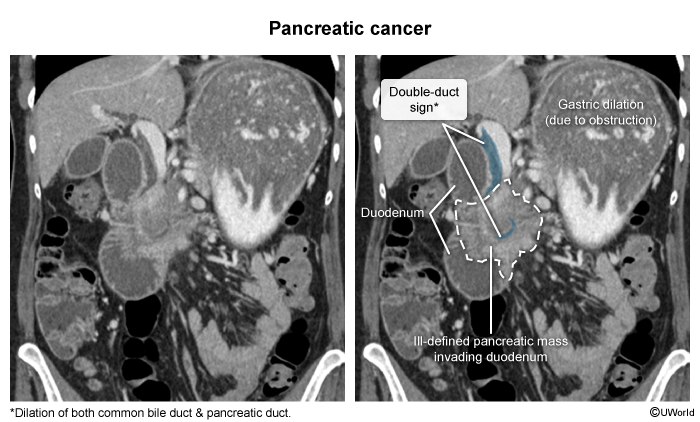Pancreatic Cancer
Article Sections
Introduction
Pancreatic cancer usually refers to pancreatic ductal adenocarcinoma that arises from the exocrine cells (in contrast to pancreatic neuroendocrine tumors that arise from the islet cells, described in a separate article). Pancreatic ductal adenocarcinoma carries a high mortality rate because of its nonspecific symptoms and delayed presentation.
Pathogenesis and pathology
The major genomic abnormality in pancreatic ductal adenocarcinoma is a KRAS-activating mutation, which allows tumor cells to grow and divide without input from the cellular milieu due to aberrant activity that relays a continuous growth signal. Because KRAS mutations are among the earliest oncogenic mutations to occur, tests for KRAS abnormalities are being developed to help with early detection.
In addition, inactivation of tumor suppressor genes (eg, CDKN2A, TP53, SMAD4) and mutations in DNA damage repair genes further promote tumorigenesis. When these mutations are inherited germline mutations (
Continue Learning with UWorld
Get the full Pancreatic Cancer article plus rich visuals, real-world cases, and in-depth insights from medical experts, all available through the UWorld Medical Library.
Figures
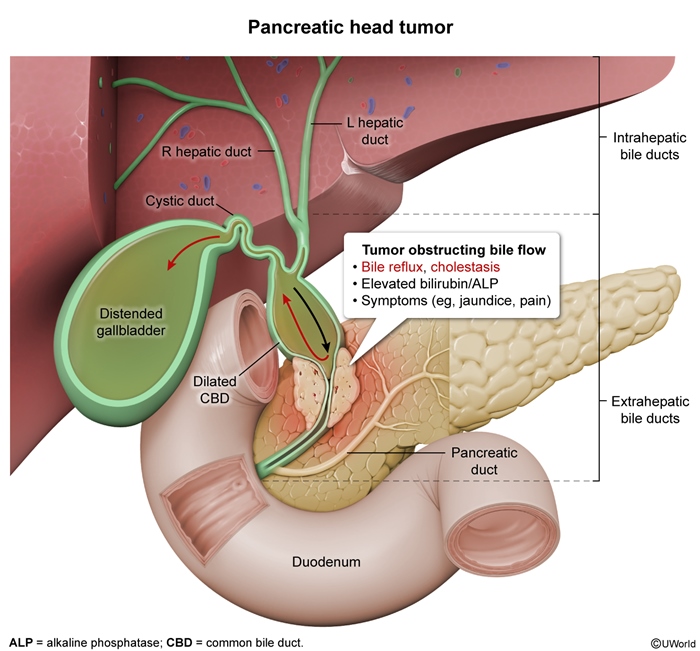
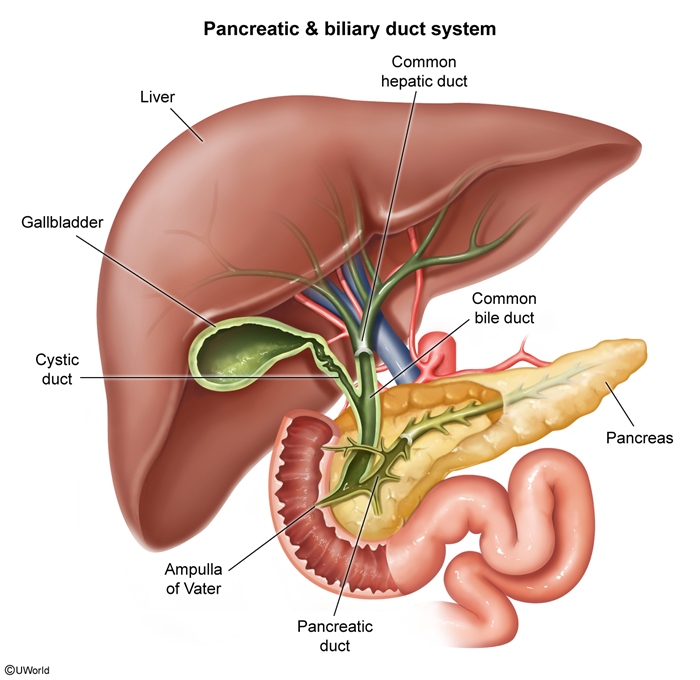
Images
